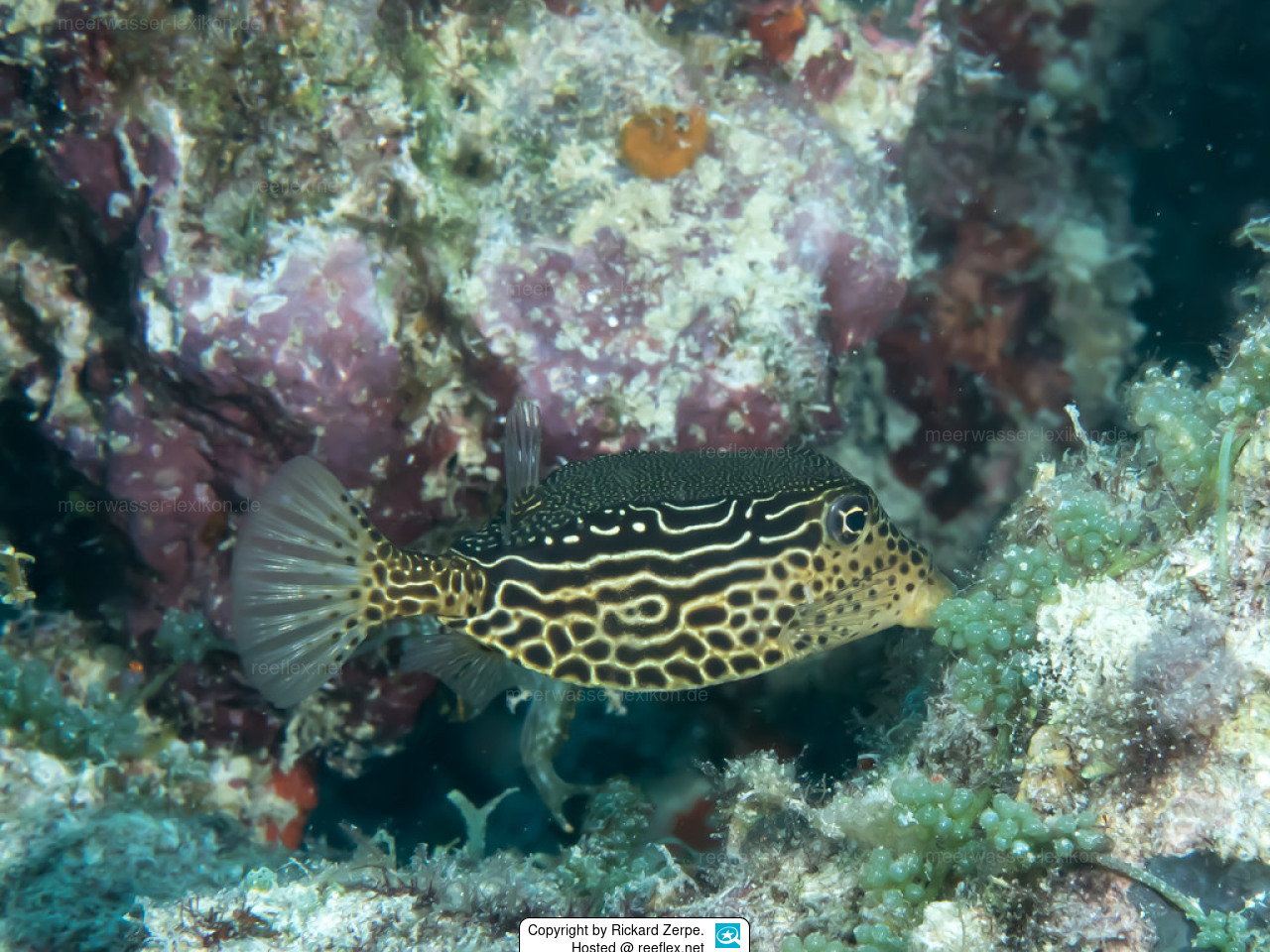Info
Inhabits clear coastal reefs in rich invertebrate habitat on shallow crests or upper zone of slopes to about 15 meters depth
Synonymised names
Ostracion solorensis Bleeker, 1853 · unaccepted > misspelling - incorrect subsequent spelling
Ostracion solorenseis commonly referred to as Reticulate Boxfish, Solor Box-fish, Striped Boxfish. Difficulty in the aquarium: Not for beginners. A aquarium size of at least 700 Liter is recommended. Toxicity: Has a poison harmful to health.

Courtesy of the author Rickard Zerpe, Schweden . Please visit www.flickr.com for more information.
Uploaded by Muelly.
Image detail

This is a general hint!
Ostracion solorense has a harmful toxin.
As a rule, animals with a harmful poison do not pose mortal danger in normal Aquarieaner everyday life. Read the following husbandry information and comments from aquarists who already keep Ostracion solorense in their aquarium to get a better picture about the possible danger. However, please be careful when using Ostracion solorense. Every human reacts differently to poisons.
If you suspect that you have come into contact with the poison, please contact your doctor or the poison emergency call.
The phone number of the poison emergency call can be found here:
[overview_and_url_DE]
Overview Worldwide: eapcct.org